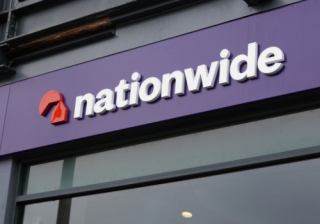Why first-time buyers will continue to increase in number
Patrick Bamford, head of international business development at Qualis Credit Risk, discusses how recent uncertainty in the mortgage sector has impacted high LTV rates and his predictions for the first-time buyer market in H2.

"The fact high LTV borrowers can still pick up products below 5% is still of note, and again perhaps tells us there is strong competition for this type of business."
What a difference a month makes.
At this point in May, I was writing about how it looked inconceivable we wouldn’t see an ongoing increase in high LTV mortgage product choice as lenders sought out one of the few demographics were transactions appear to be growing – namely through first-time buyers.
Then, to put it bluntly, it all went a bit Truss/Kwarteng, or something approximating that post-‘Mini Budget’ period when the money markets changed sharply, with lenders scrambling to make sense of where rates might be heading, at what point they might peak, and whether their existing product ranges were already under water.
The catalyst was of course the latest inflation figures, which on the surface looked positive given they had fallen, but at their ‘core’ had actually risen, and therefore future Bank of England intervention appeared not only to be inevitable but required in a ‘further and faster’ way.
As I write, there has been a degree of stability back in the market over the last few days at least. Swap rates which jumped quickly and by significant amounts have come down off those highs and – touch wood – they will move down further.
Certainly, lenders appear to have more certainty now than a week or two ago, and many have already launched back into the market albeit with smaller product ranges and higher rates. Meeting affordability has not got any easier.
Given that there were media headlines about lenders pulling 700/800 mortgage products over a one-week period, you can imagine that it was with a little trepidation that I conducted this month’s regular look at 95% LTV product numbers.
Over the course of the last six months or so, those product options have continued to move upwards, as lenders looked to secure purchase business volumes in particular from those most likely to need higher LTV products.
It will be the least surprising news of the month to learn that those numbers have fallen on a month-by-month basis. Using the Nationwide’s latest average house price figure of just shy of £261k, I’ve looked at the number of 5% deposit products currently available, and the types that are accessible.
In May, product numbers had tipped over 150, but this month – given the recent market upheaval – we are back down to 126, a figure last seen at the end of last year/start of this.
Those products are split between 100 fixed-rate options – down from 123 – and 26 variable/discount/trackers – only slightly down from 28.
Again, it is no surprise to see fixes taking the biggest hit, given the number of lenders that felt compelled to pull their fixed-rate mortgages as a result of that rate uncertainty.
There is slightly more positive news in terms of the ‘Best Buys’ in different product categories, which are not a million miles away from last month but have clearly increased over that time period.
Last month the top 95% LTV discount/variable product was 4.54% from Scottish Building Society but now it is the 4.65% lifetime discount from Vernon which has continued to be close to the top for some months, followed by Beverley Building Society with its 4.79% two-year discount.
For those seeking the certainty of a fix – and given what the MPC might well be considering over the rest of 2023 you can understand why – Platform currently top the tables with a 4.85% five-year fix, while the Monmouthshire continues to lead the two-year options with its 4.9%.
The fact high LTV borrowers can still pick up products below 5% is still of note, and again perhaps tells us there is strong competition for this type of business. Also, even with the anticipated movement in Bank Base Rate (BBR), longer-term swap rates are still hovering around the 4% mark, and there is some suggestion they could continue to move down a little further now that the markets have priced in further increases to BBR.
The results of the next MPC meeting will be announced on the 22nd June, and I think few are not expecting the Bank to act again, especially given the core inflation rate went up. What else does it have at its disposal to move inflation?
As mentioned however, as we move past the half-way point of the year, I suspect there are few mortgage lenders who will be able to say they are comfortably on target for mortgage volumes. That fact alone will drive greater levels of activity in H2, particularly in areas of the market where there is demand that can translate to completions.
First-time buyers have increased in number and everything points to them continuing to do so. In a sense, I will stick to the same message as last month – I expect the number of higher LTV product options to continue to rise throughout the rest of 2023, and even with this most recent bump in the road, that seems like a prediction worth sticking to.
Breaking news
Direct to your inbox:
More
stories
you'll love:
This week's biggest stories:
FCA
Firms required to report complaints involving vulnerable customers under simplified FCA rules

Santander
Santander joins mortgage price war with new rates from 3.51%

FCA
FCA sets out timeline for mortgage rule changes

State Pension
Budget: Government signals income tax write off for state pensions exceeding personal allowance

This week's biggest stories:
FCA
Firms required to report complaints involving vulnerable customers under simplified FCA rules

Santander
Santander joins mortgage price war with new rates from 3.51%

FCA
FCA sets out timeline for mortgage rule changes

State Pension
Budget: Government signals income tax write off for state pensions exceeding personal allowance

FCA
FCA announces new measures to support growth of mutuals sector

Nationwide
FCA fines Nationwide £44m for inadequate financial crime controls
